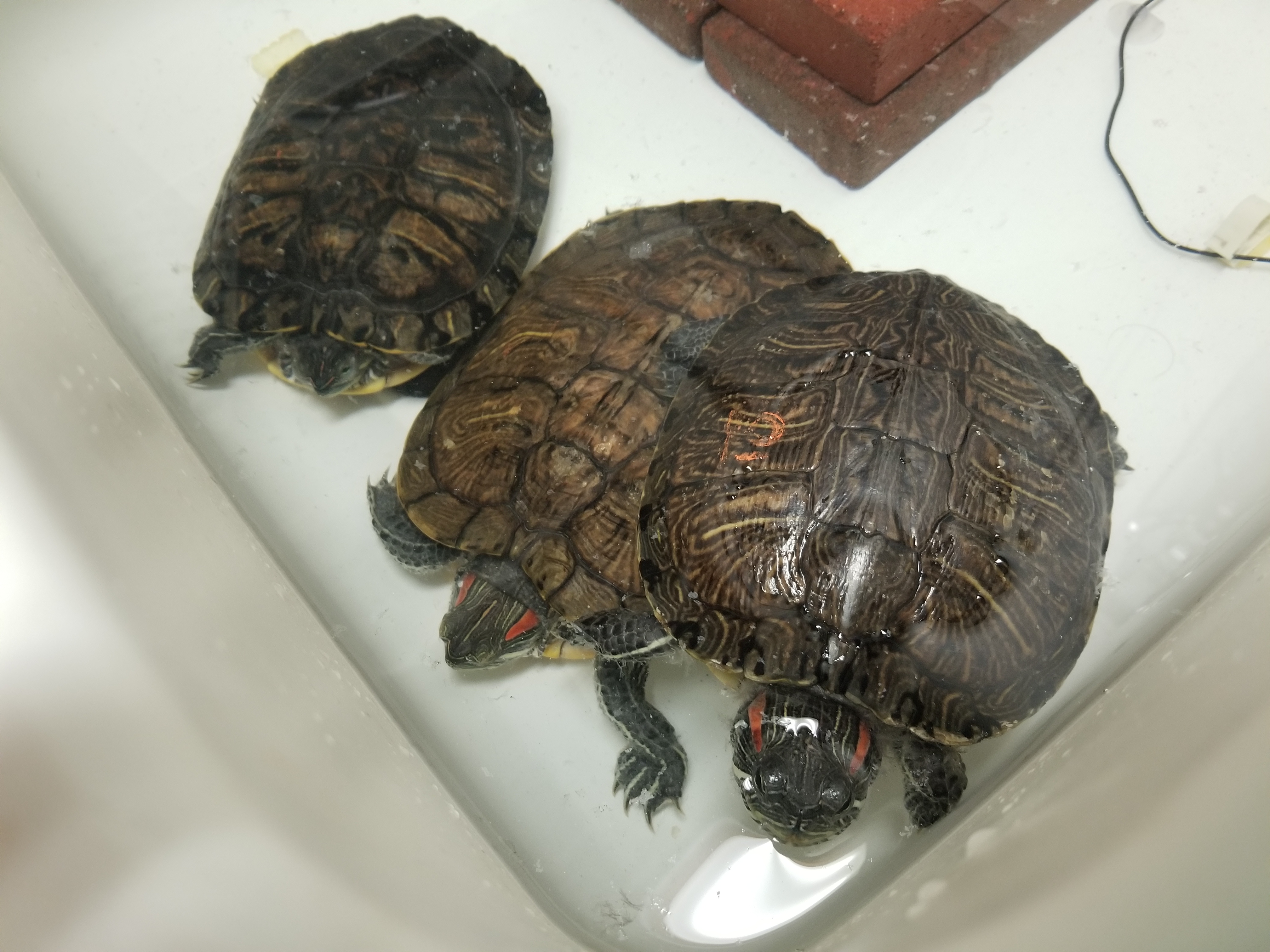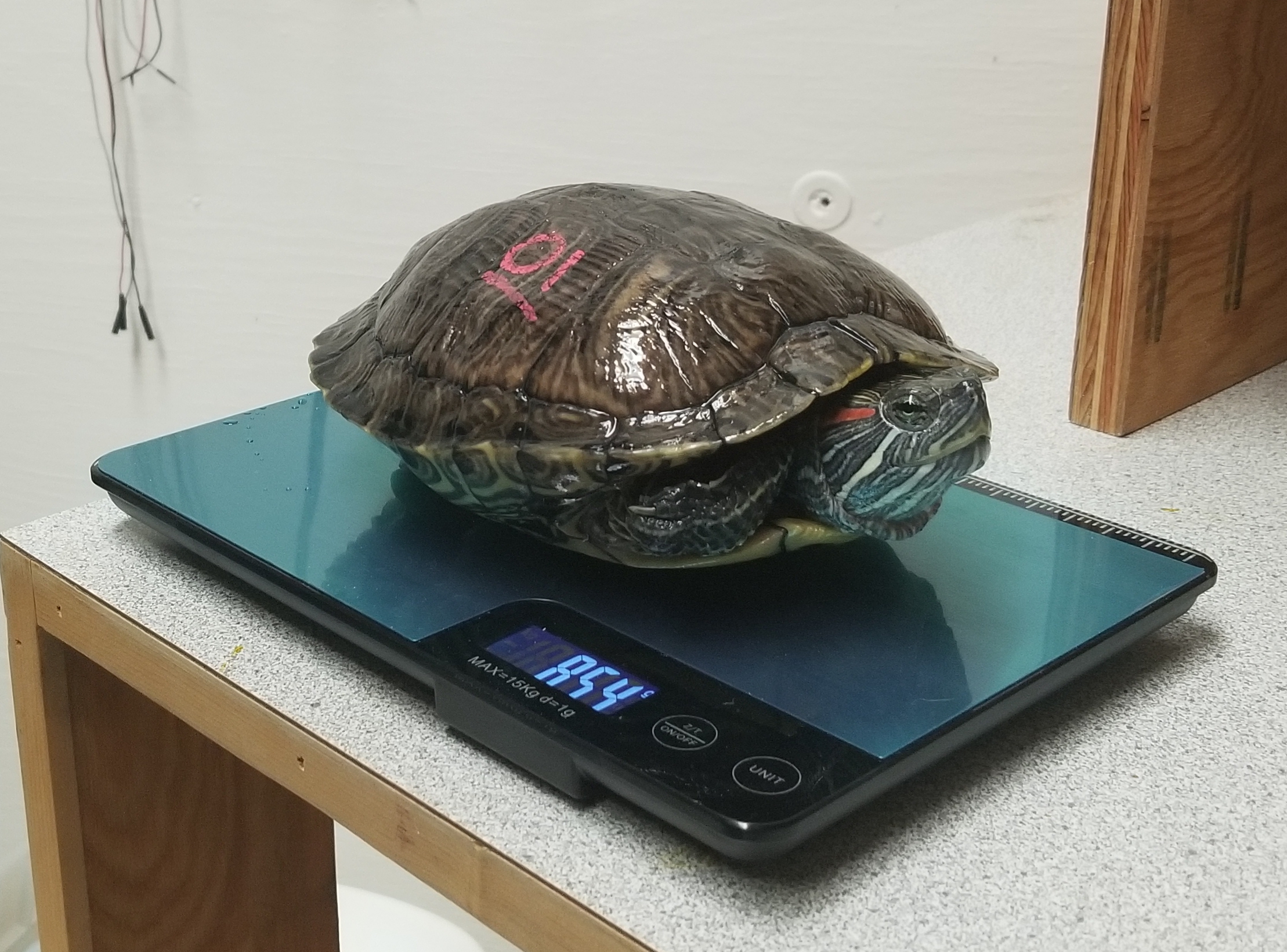Turtle Hearing and Noise Impacts
Cues and signals
The physics of underwater sound propagation has led to many aquatic species adapting to produce and detect sounds to successfully complete their life histories. Turtles, being amphibious, need to detect both air- and water-borne sounds. Evidence suggests that they have higher sensitivity to sound underwater compared to air, and turtles likely use low-frequency underwater sounds as a source of information about their abiotic and biotic environment. This also means that both freshwater and sea turtles are likely affected by the anthropogenic sound that has become increasingly present in our world’s oceans and water bodies. Human-created noise does more than simply mask the sounds turtles and other animals need to hear—it can also induce a shift in an animal’s hearing sensitivity, meaning lower amplitude sounds are harder to detect. This temporary threshold shift (TTS) has been observed across many taxa (e.g., mammals, fishes, and birds), but has been considered little in reptiles. There is presently no information about the susceptibility of turtles to this temporary hearing loss, which could have consequences for their ability to sense and respond to their environment.
To address this knowledge gap, we are using a relatively non-invasive technique called auditory evoked potentials (AEPs) to assess the underwater auditory thresholds of turtles. An auditory threshold indicates the minimum amplitude required for a sound at a given frequency to be audible to an animal. Due to the protected status of marine species, we are using freshwater species of least concern (IUCN). After establishing a turtle’s baseline hearing, we expose the turtle to underwater noise, which is followed by additional AEP measurements to assess any shifts in auditory sensitivity and to track recovery back to baseline audition. The results from these studies will help inform how turtles are affected by anthropogenic noise in both marine and freshwater habitats, and aid in managing noise impacts in habitats important to turtle species.
Work is funded by the US Navy’s Living Marine Resources Program.

